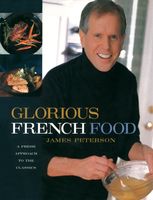Advertisement
Roasting Pans
Appears in
Published 2002
Until recently, I only had one roasting pan, too big for everything except a turkey; it forced me to improvise and use a heavy iron skillet or an oval enameled gratin dish. Buy or improvise a roasting pan that matches as closely as possible the size and shape of whatever it is you’re roasting. If the roasting pan is too big, the juices from the roast spread out over the surface of the pan, get too hot, and burn. Ideally, a roasting pan should be heavy, so the heat is evenly distributed and so it won’t get too hot in the areas not being touched by the roast, a condition that, again, causes the juices to burn. Another factor is the color of the roasting pan. A dark pan, like my improvised iron skillet, makes it difficult to see whether or not the juices are burning. If you have a choice, opt for a pan with a shiny, silvery inside surface. Though I have many uses for nonstick pans, I don’t like nonstick roasting pans because the juices don’t cling to their surface, and thus it is difficult if not impossible to separate juices and fat. My roasting plans are made of aluminum (plain, not anodyzed) and copper lined with stainless steel.


